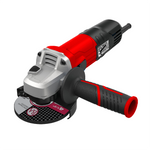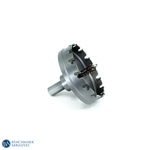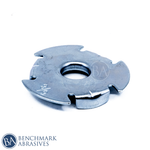
What's The Recommended Approach For Cylindrical Grinding To Maintain Concentricity

Achieving accurate concentricity in cylindrical grinding is necessary for producing high-quality, exact cylindrical parts. During this process, the workpiece's internal or external surfaces involve grinding, which calls for careful consideration of several crucial factors. To guarantee that the centerlines of different diameters on a cylindrical part align with an external diameter, the combined approach of appropriate workholding, machine maintenance, and process control is essential.
Mainly, the approach used for securing the workpiece includes using centers or precision chucks, which are key factors. Further, the outcome is directly affected by the state of the grinding wheel and the grinding machine itself, particularly its stiffness. Manufacturers can reduce errors and attain the required degree of concentricity by following stringent alignment protocols and keeping feed rates constant.
Key Factors To Concentricity
1. Workholding
In cylindrical grinding, workholding is the basic element that determines the accuracy and precision of the final workpiece, especially when looking for high concentricity. It includes the tools and techniques used to support and securely place the workpiece in position, which ensures that the workpiece spins steadily and reliably during the grinding process. The following are some of the methods that come under workholding:
-
Between Centers
Workholding between centers is an essential method for attaining remarkable concentricity in cylindrical grinding. The process involves supporting the workpiece at both ends using properly matched centers, usually conical points, found in the grinding machine's headstock and tailstock. By effectively creating a fixed rotational axis, this method reduces the impact of outside pressures or irregularities in the workpiece on the grinding process. The precision and cleanliness of these facilities are essential to its performance. Any flaws, including damage, filth, or misalignment, will result in mistakes in the final product.
Also, for longer or more fragile workpieces, using steady rests becomes essential to give extra support or to prevent deflection. This will make sure that the grinding process retains the designated centerline along the part's length. Between centers grinding is the recommended approach for applications requiring the greatest degree of precision and concentricity due to its natural stiffness and stability.
-
Collets and Chucks
Collets and chucks serve as alternative workholding solutions when "between centers" grinding is not possible, each with its set of factors to be taken into account when preserving concentricity. Collets are perfect for gripping workpieces with consistent diameters due to their precision and recurrence. They are capable of holding the workpiece securely along a significant section of its length, which helps in reducing the deflection and also improves accuracy. However, the right selection and handling of the collet is crucial as damaged or outdated collet can cause runout and compromise concentricity.
Chucks, on the other hand, are highly versatile, especially 4-jaw independent chucks, which can accommodate a wide range of workpiece shapes and sizes. A four-jaw chuck requires careful indication and adjustment to perfectly match the workpiece's rotational axis with the machine's spindle to achieve concentricity. Although this technique is highly flexible, it requires a high level of operator skill and accuracy.
Ensure to clean your workholding device, correctly align it, and offer a safe and secure grip for reducing runout and maintaining the required concentricity in cylindrical grinding, irrespective of whether collets or chucks are used.
2. Component And Machine Condition
The condition of the machine and the workpiece or component is crucial in achieving accurate cylindrical grinding results, mainly in maintaining concentricity. Here are a few considerations that come under component and machine condition:
-
Machine Rigidity
Machine rigidity is a crucial factor in achieving and maintaining concentricity during cylindrical grinding. A stiff machine structure helps in reducing vibrations and deflections that can fail the grinding process. This can cause inaccuracies and deviations from the required cylindrical shape. Any flex or vibrations in the components of a machine like the workhead, wheelhead, or tailstock, can result in changes in the diameter of a workpiece and concentricity.
The spindle's rigidilty, the stability of a machine bed, and the overall structural integrity play an important role. A stiff and strong machine offers a stable platform for the grinding wheels and workpiece, which ensures that the cutting forces can be applied correctly without producing unwanted movement. This allows a better control of the grinding process, providing parts with outstanding concentricity and uniform dimensions. Hence, investing in a strong, reliable, and well-maintained grinding machine is ideal for manufacturers looking to obtain high levels of precision and repeatability in their cylindrical grinding operations.
-
Condition of the grinding wheel
The condition of a grinding wheel plays a crucial role in achieving and maintaining concentricity during cylindrical grinding. A well-maintained dressing and a balanced wheel will ensure consistent material removal and reduce vibrations that might affect the precision of a workpiece. Dressing refers to the process of reshaping and sharpening the cutting wheel's surface, which is perfectly suitable for maintaining the shape and cutting efficiency of a wheel. The poorly dressed wheel can cause wheel loading and uneven cutting, along with potential damage to the workpiece. Choosing the right grinding wheel is crucial for a particular workpiece material and the required surface finish.
Additionally, ensuring adequate coolant flow is necessary for maintaining the grinding wheel as well as material cool. This also helps in reducing thermal distortion and efficiently removing grinding debris. Insufficient coolant can generate excessive heat, which leads to wheel wear, workpiece damage, and reduced concentricity.
3. Process Control
Highly effective process control is crucial for consistently achieving high concentricity in cylindrical grinding. This includes a variety of procedures intended to reduce variance and guarantee consistent results. The workhead, tailstock, and grinding wheel must all be precisely aligned because any misalignment might cause mistakes to spread throughout the workpiece. Consistent feed rates are also essential as fluctuations in feed can cause uneven material removal and deviations from the required cylindrical shape. Also, to keep an eye on the process and identify potential problems swiftly, a strict and reliable measurement and inspection methodology must be implemented. This includes frequent checking of workpiece dimensions and concentricity by utilizing proper measuring tools.
Additional factors that support process control include preserving a steady grinding environment, which includes steady coolant flow and temperature regulation. Operators can reduce the possibility of mistakes, preserve constant quality, and accomplish the required degree of concentricity in their cylindrical grinding operations by carefully following these process control procedures.
4. Centers
For achieving ideal concentricity in cylindrical grinding, mainly when utilizing the "between centers" workholding method, the center's alignment and condition is essential. Centers act as the essential points that determine the part's rotating axis, whether they can be found on the workpiece or the headstock and tailstock of the machine. Any flaws in these centers, including wear, corrosion, or debris, will manifest themselves directly in the ground workpiece as errors.
For example, a workpiece with a broken center will rotate wildly, producing an out-of-round and non-concentric portion. Likewise, a skewed rotational axis resulting from misalignment between the center of the headstock and tailstock will produce tapered or noncylindrical forms.
Thus, it is essential to pay close attention to the accuracy, hygiene, and alignment of all centers. This includes frequent damage inspection, adequate lubrication to reduce wear, and accurate alignment using the right measuring tools. Thus, it is essential to pay close attention to the accuracy, hygiene, and alignment of all centers. This includes frequent damage inspection, adequate lubrication to reduce wear, and accurate alignment using the right measuring tools. Operators can obtain the maximum levels of concentricity in their cylindrical grinding operations by establishing a stable and precise rotational axis by making sure the centers are in ideal condition and precisely aligned.
Following the above-mentioned considerations will help you in improving or achieving the concentricity of your cylindrical grinding operations.



































































